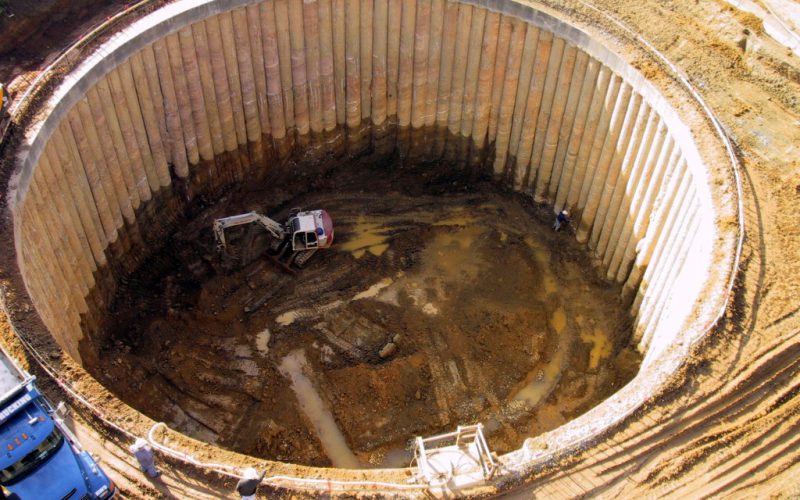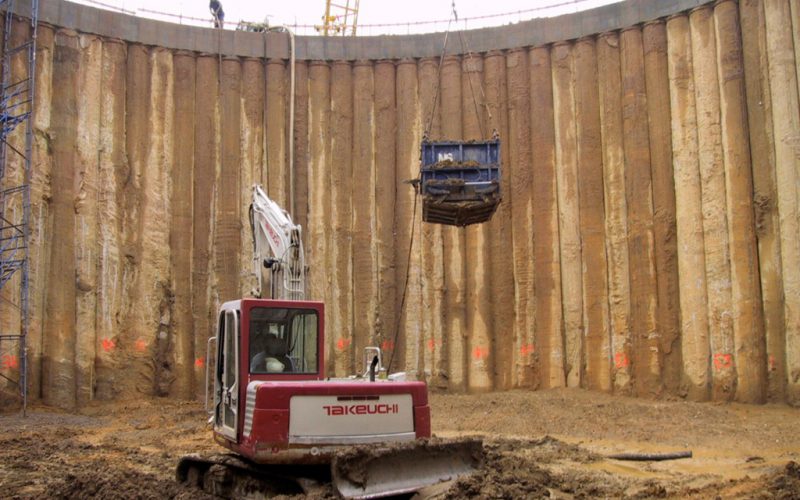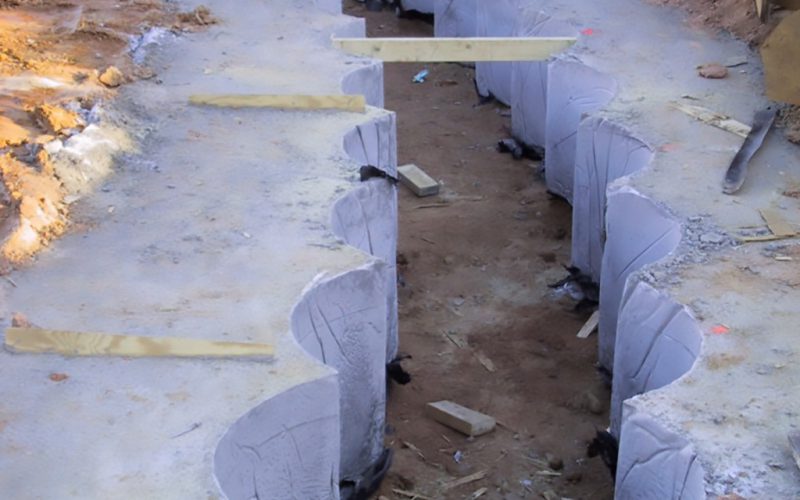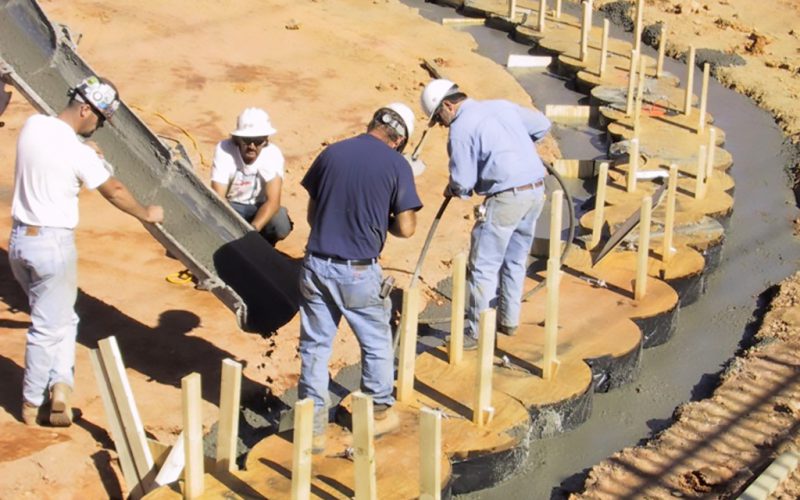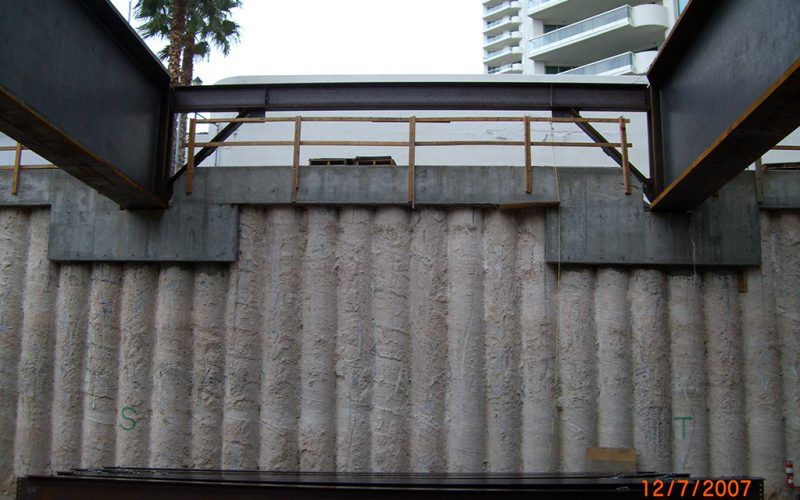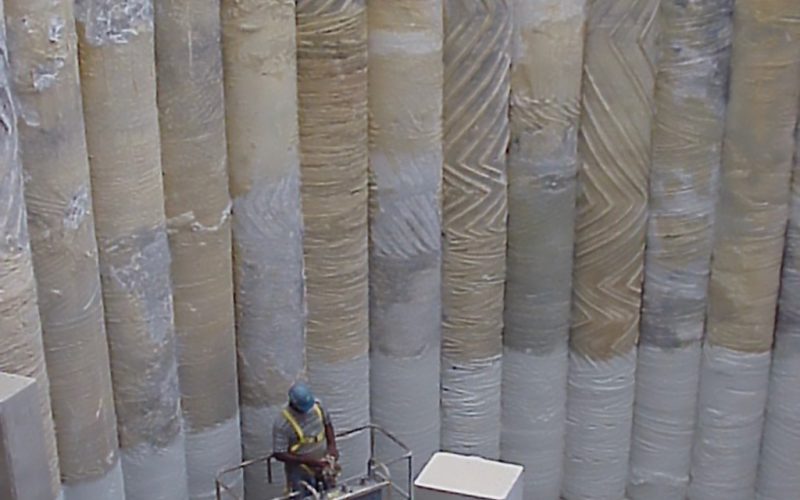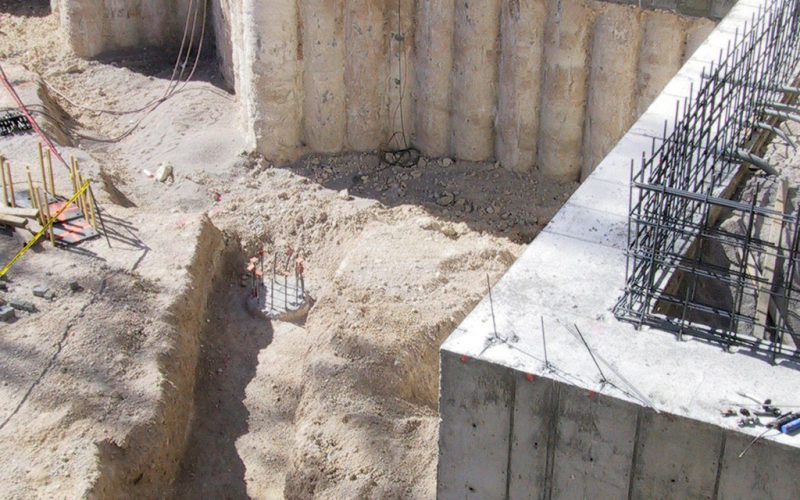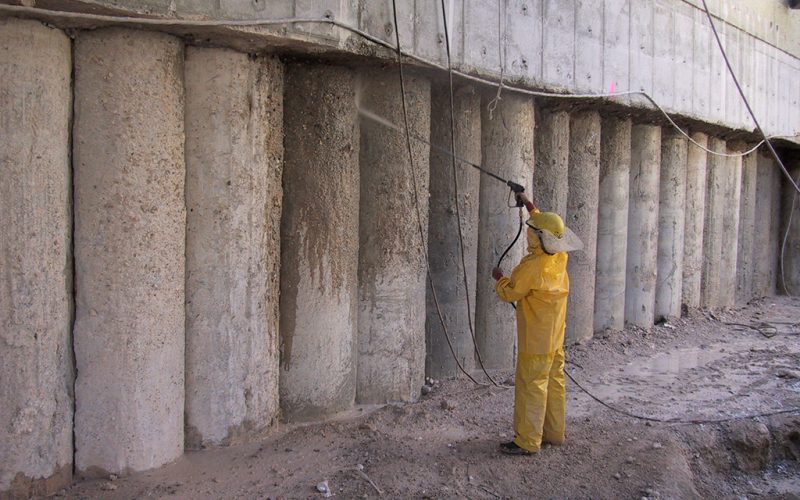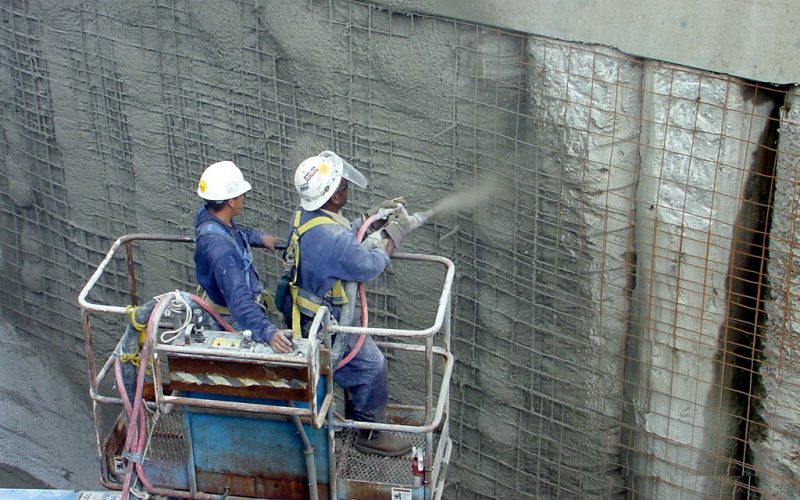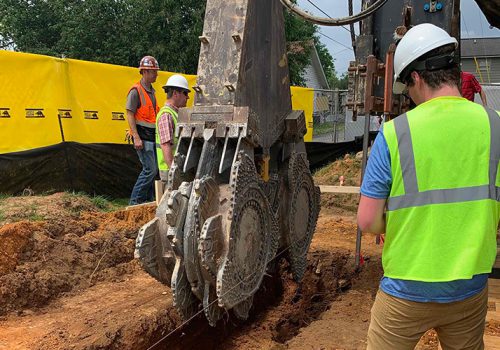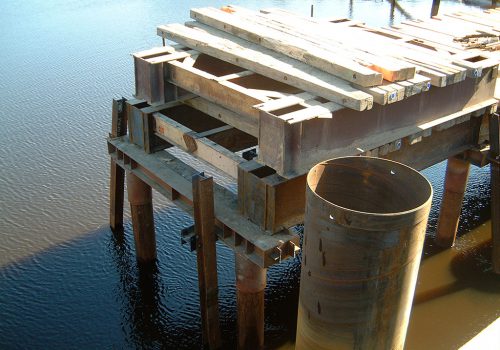Secant Pile Walls
Secant pile walls are particularly suitable for excavations close to buildings, roads, and other sensitive structures. These retaining walls are formed by a series of interlocking drilled shafts and can be used where high water tables and/or unstable ground conditions occur. Secant walls are installed by high torque fixed mast rigs. Typically, 36” diameter shafts are installed at 30” centers, although this can vary depending on retained height and soil properties.
Shafts are typically installed through a concrete guide wall that serves as a template to maintain proper alignment and pile overlap. Depending upon project requirements and soil conditions, pile installation can be performed using cased ahead procedures, resulting in minimal ground disturbance during installation or with the CFA method.
Typical Uses of Secant Walls
- Intake structures
- Below grade holding tanks
- Cut and cover tunnels
- Basement construction
Top-Down Construction with Secant Walls
We have pioneered the use of “top-down” construction in the US. The key to this approach is the ability to provide considerable schedule acceleration by allowing basement excavation to proceed at the same time as superstructure construction is performed. This is done by installing a secant wall for the basement from grade at the same time as the as column shafts are installed.
Typically, the ground floor slab can also be poured on grade. A gap in the secant pile wall or hole in the ground floor slab is left open to allow access for basement excavation as superstructure construction proceeds. Our top-down projects successfully generate significant schedule advantages over conventional construction methods.

